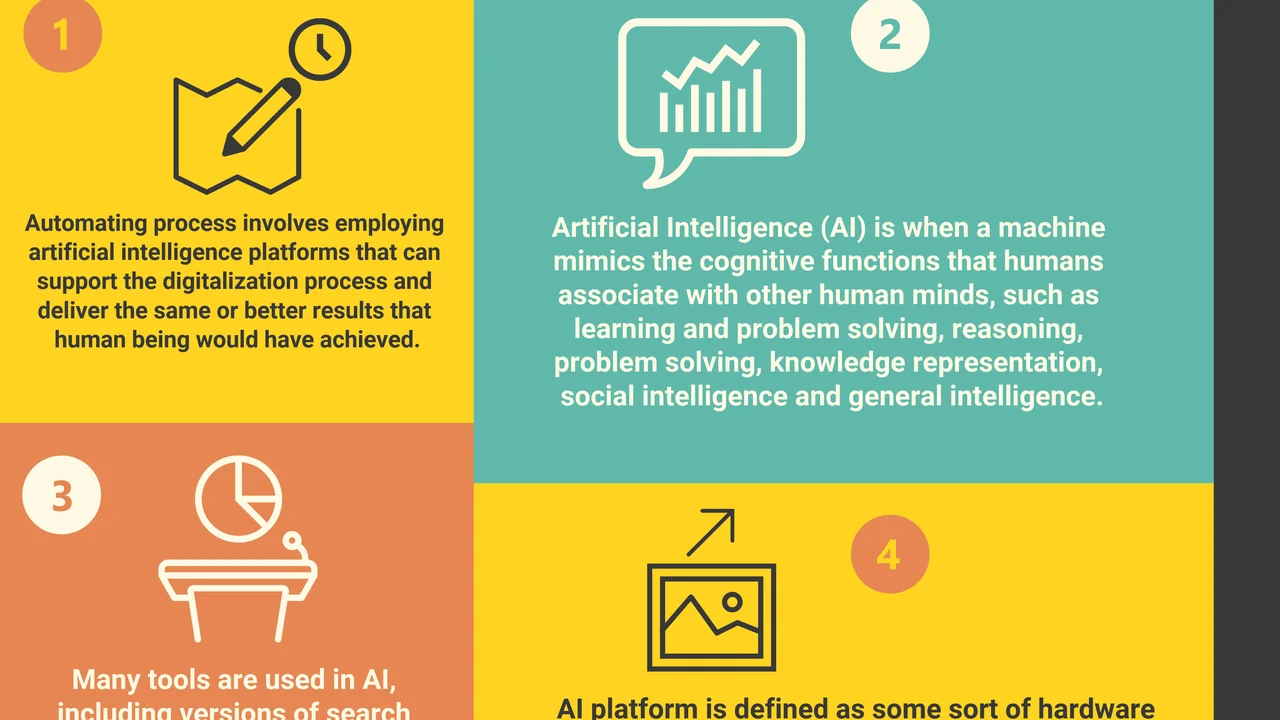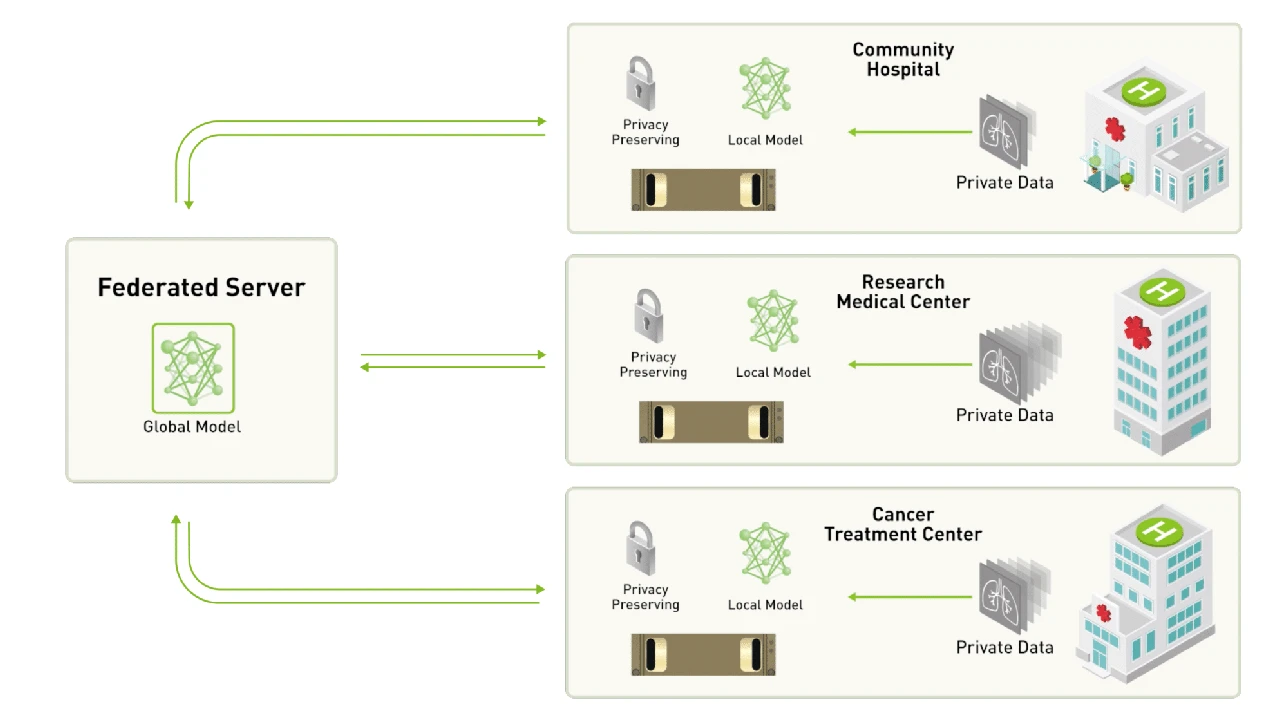AI Cloud Platforms: Choosing the Right Platform for Your Needs
Explore AI cloud platforms and how to choose the right platform for your needs. This article compares the different AI cloud platforms available. Discover the future of AI in the cloud.

Understanding AI Cloud Platforms Key Features and Benefits
So, you're diving into the world of AI and need a place to build, train, and deploy your models? That's where AI cloud platforms come in. Think of them as your all-in-one AI workshop in the cloud. They provide the infrastructure, tools, and services you need to bring your AI ideas to life without having to worry about managing servers or complex software.
AI cloud platforms offer a bunch of benefits. First off, **scalability**. Need more computing power? Just scale up. Done with your experiment? Scale down. You only pay for what you use. Second, **accessibility**. You can access these platforms from anywhere with an internet connection. Third, **pre-built tools and services**. Most platforms offer a range of pre-trained models, APIs, and development tools to speed up your AI projects. Fourth, **collaboration**. AI cloud platforms make it easy for teams to work together on projects, share resources, and track progress.
Comparing Major AI Cloud Platforms AWS Azure and Google Cloud
Let's take a look at some of the major players in the AI cloud platform space:
- Amazon Web Services (AWS): AWS offers a comprehensive suite of AI services, including Amazon SageMaker for building and training models, Amazon Rekognition for image and video analysis, Amazon Comprehend for natural language processing, and Amazon Lex for building chatbots. AWS is known for its extensive documentation, mature ecosystem, and competitive pricing.
- Microsoft Azure: Azure provides a range of AI services, including Azure Machine Learning for building and deploying models, Azure Cognitive Services for pre-trained AI models, and Azure Bot Service for building chatbots. Azure is well-integrated with other Microsoft products and services, making it a good choice for organizations already using Microsoft technologies.
- Google Cloud Platform (GCP): GCP offers AI services like Vertex AI for machine learning, Cloud Vision API for image analysis, Cloud Natural Language API for NLP, and Dialogflow for building conversational AI agents. Google Cloud is known for its innovative AI technologies and its expertise in deep learning.
Choosing the right platform depends on your specific needs and requirements. Consider factors like the types of AI models you want to build, the size of your datasets, your budget, and your team's expertise.
Specific Product Recommendations and Use Cases
Okay, let's get down to specifics. Here are a few AI cloud platform services I'd recommend, along with their use cases and pricing:
AWS SageMaker: For End-to-End Machine Learning Development
Use Case: Building, training, and deploying machine learning models. SageMaker provides a fully managed environment for all stages of the ML lifecycle.
Scenario: Imagine you're a retail company and want to predict which customers are likely to churn. You can use SageMaker to build a churn prediction model using your customer data. You can then deploy the model to predict churn in real-time and take proactive steps to retain those customers.
Comparison: SageMaker offers a comprehensive set of features, including built-in algorithms, automated model tuning, and model deployment tools. It's a good choice for teams that need a complete ML platform.
Pricing: SageMaker pricing is based on usage, with different rates for compute instances, storage, and data transfer. You can estimate your costs using the AWS Pricing Calculator.
Azure Cognitive Services: For Pre-Trained AI Models
Use Case: Easily integrate pre-trained AI models into your applications. Cognitive Services offers APIs for vision, speech, language, and decision-making.
Scenario: Suppose you're developing a customer support chatbot. You can use Azure Cognitive Services' Language Understanding (LUIS) to understand user intent and extract relevant information from their messages. This allows your chatbot to respond accurately and efficiently.
Comparison: Azure Cognitive Services provides a wide range of pre-trained models that are easy to use. It's a good choice for teams that want to quickly add AI capabilities to their applications without having to build their own models from scratch.
Pricing: Azure Cognitive Services pricing is based on usage, with different rates for each API. You can explore the pricing details on the Azure website.
Google Cloud Vertex AI: For Unified Machine Learning Platform
Use Case: A unified platform for building, deploying, and managing machine learning models. Vertex AI integrates various Google Cloud AI services into a single interface.
Scenario: Let's say you're a healthcare provider and want to use AI to improve patient outcomes. You can use Vertex AI to build a model that predicts the likelihood of a patient developing a particular disease based on their medical history and other factors. You can then deploy the model to provide personalized treatment recommendations.
Comparison: Vertex AI offers a unified experience for ML development, making it easier to manage your AI projects. It's a good choice for organizations that want a streamlined ML platform.
Pricing: Vertex AI pricing is based on usage, with different rates for compute, storage, and data processing. Check the Google Cloud website for the most up-to-date pricing information.
Detailed Comparison: Pricing Models and Cost Considerations for AI Cloud Services
Pricing is a crucial factor when choosing an AI cloud platform. Each platform has its own pricing model, which can be complex and vary depending on the services you use. Let's break down the pricing models for AWS, Azure, and Google Cloud:
- AWS: AWS offers a pay-as-you-go pricing model, with different rates for compute instances, storage, data transfer, and individual AI services. You can use the AWS Pricing Calculator to estimate your costs. Key cost factors include the type and size of compute instances you use for training and inference, the amount of data you store, and the volume of API calls you make.
- Azure: Azure also offers a pay-as-you-go pricing model, with different rates for virtual machines, storage, data transfer, and AI services. You can use the Azure Pricing Calculator to estimate your costs. Key cost factors include the type and size of virtual machines you use, the amount of data you store, and the number of transactions you perform.
- Google Cloud: Google Cloud offers a pay-as-you-go pricing model, with different rates for compute engine instances, storage, data transfer, and AI services. You can use the Google Cloud Pricing Calculator to estimate your costs. Key cost factors include the type and size of compute instances you use, the amount of data you store, and the volume of API requests you make.
When comparing pricing, consider the following:
- Free Tier: Many platforms offer a free tier that allows you to experiment with their services without paying. Take advantage of the free tier to try out different platforms and see which one best meets your needs.
- Reserved Instances: If you plan to use a particular service for an extended period, consider purchasing reserved instances to save money. Reserved instances offer a discount compared to on-demand pricing.
- Spot Instances: If you're willing to be flexible with your compute capacity, you can use spot instances to save money. Spot instances are available at a discount, but they can be terminated with little notice.
- Data Transfer Costs: Be aware of data transfer costs, which can be significant if you're moving large amounts of data in and out of the cloud.
Choosing the Right AI Cloud Platform: Factors to Consider
Choosing the right AI cloud platform is a big decision. Here's a checklist to help you make the right choice:
- Your AI Goals: What are you trying to achieve with AI? What types of models do you need to build?
- Your Team's Expertise: What AI skills does your team already have? Which platforms are they familiar with?
- Your Budget: How much are you willing to spend on AI cloud services?
- Your Data: Where is your data stored? How much data do you have?
- Integration: How well does the platform integrate with your existing systems?
- Security and Compliance: Does the platform meet your security and compliance requirements?
- Scalability: Can the platform scale to meet your future needs?
- Support: What level of support does the platform offer?
By carefully considering these factors, you can choose an AI cloud platform that will help you achieve your AI goals.
Hands-On Examples and Tutorials: Getting Started with AI Cloud Platforms
The best way to learn about AI cloud platforms is to get your hands dirty. Here are some hands-on examples and tutorials to get you started:
- AWS SageMaker: Follow the AWS SageMaker documentation to build and train a simple machine learning model. You can find tutorials on the AWS website.
- Azure Machine Learning: Use the Azure Machine Learning Studio to build a drag-and-drop machine learning pipeline. You can find tutorials on the Azure website.
- Google Cloud Vertex AI: Follow the Google Cloud Vertex AI documentation to deploy a pre-trained model. You can find tutorials on the Google Cloud website.
These tutorials will walk you through the process of setting up an AI cloud platform account, creating a project, uploading data, building and training a model, and deploying the model to production.
Future Trends in AI Cloud Platforms: What to Expect
The world of AI cloud platforms is constantly evolving. Here are some future trends to watch out for:
- More Automation: AI cloud platforms will become more automated, making it easier for non-experts to build and deploy AI models.
- Edge AI: AI cloud platforms will increasingly support edge AI, allowing you to run AI models on devices at the edge of the network.
- Explainable AI (XAI): AI cloud platforms will provide more tools for explaining how AI models work, making them more transparent and trustworthy.
- Quantum AI: AI cloud platforms will begin to offer quantum computing services, enabling you to solve complex AI problems that are beyond the reach of classical computers.
- Specialized Hardware: AI cloud platforms will offer access to specialized hardware, such as GPUs and TPUs, that are optimized for AI workloads.
These trends will make AI cloud platforms even more powerful and accessible, opening up new possibilities for AI innovation.
Security Considerations for AI Cloud Platforms: Protecting Your Data and Models
Security is paramount when working with AI cloud platforms. You need to protect your data and models from unauthorized access, theft, and misuse. Here are some security considerations:
- Data Encryption: Encrypt your data at rest and in transit to protect it from unauthorized access.
- Access Control: Implement strict access control policies to limit who can access your data and models.
- Vulnerability Scanning: Regularly scan your AI cloud platform environment for vulnerabilities.
- Incident Response: Have a plan in place for responding to security incidents.
- Compliance: Ensure that your AI cloud platform environment meets all relevant compliance requirements.
By taking these security precautions, you can minimize the risk of a security breach and protect your valuable AI assets.
Real-World Case Studies: Success Stories of AI Cloud Platform Adoption
Let's look at some real-world examples of how organizations are using AI cloud platforms to achieve success:
- Netflix: Netflix uses AWS to power its recommendation engine, which suggests movies and TV shows to users based on their viewing history.
- Ford: Ford uses Azure to develop autonomous vehicles.
- Waymo: Waymo uses Google Cloud to train its self-driving car models.
These are just a few examples of the many ways that organizations are using AI cloud platforms to innovate and gain a competitive advantage.
Troubleshooting Common Issues with AI Cloud Platforms
Working with AI cloud platforms can sometimes be challenging. Here are some common issues and how to troubleshoot them:
- Connection Problems: If you're having trouble connecting to an AI cloud platform, check your internet connection and make sure that your firewall is not blocking access.
- Authentication Errors: If you're getting authentication errors, double-check your credentials and make sure that you have the correct permissions.
- Resource Limits: If you're running into resource limits, try scaling up your resources or optimizing your code.
- Model Training Errors: If your model is not training properly, check your data for errors and make sure that your code is correct.
By following these troubleshooting tips, you can resolve common issues and get your AI projects back on track.
The Role of Open Source in AI Cloud Platforms
Open source plays a significant role in the AI cloud platform ecosystem. Many AI cloud platforms offer support for open-source tools and frameworks, such as TensorFlow, PyTorch, and scikit-learn.
Using open-source tools can provide several benefits:
- Flexibility: Open-source tools are highly customizable, allowing you to tailor them to your specific needs.
- Community Support: Open-source tools have large and active communities, providing you with access to a wealth of knowledge and support.
- Cost Savings: Open-source tools are typically free to use, which can save you money on software licenses.
AI cloud platforms often provide pre-configured environments for open-source tools, making it easy to get started with AI development.
:max_bytes(150000):strip_icc()/277019-baked-pork-chops-with-cream-of-mushroom-soup-DDMFS-beauty-4x3-BG-7505-5762b731cf30447d9cbbbbbf387beafa.jpg)





